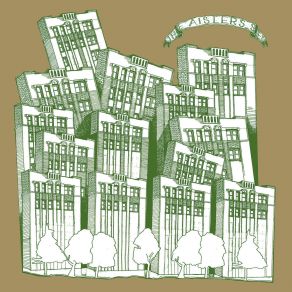How I Learned to Write Backwards
Download links and information about How I Learned to Write Backwards by The Aislers Set. This album was released in 2003 and it belongs to Rock, Pop, Alternative genres. It contains 11 tracks with total duration of 31:02 minutes.

|
|
|---|---|
| Artist: | The Aislers Set |
| Release date: | 2003 |
| Genre: | Rock, Pop, Alternative |
| Tracks: | 11 |
| Duration: | 31:02 |
| Buy it NOW at: | |
| Buy on iTunes $9.99 | |
| Buy on iTunes $9.99 | |
Tracks
[Edit]| No. | Title | Length |
|---|---|---|
| 1. | Catherine Says | 2:39 |
| 2. | Emotional Levy | 3:04 |
| 3. | Languor in the Balcony | 1:57 |
| 4. | Mission Bells | 3:58 |
| 5. | Melody Not Malaise | 3:25 |
| 6. | The Train | 1:37 |
| 7. | Attraction Action Reaction | 3:40 |
| 8. | The Train #2 | 1:03 |
| 9. | Through the Swells | 2:39 |
| 10. | Unfinished Paintings | 4:10 |
| 11. | Sara's Song | 2:50 |
Details
[Edit]How I Learned to Write Backwards, the third and brightest album from San Francisco retro-minded indie pop sweethearts the Aislers Set, would also be their last before a lengthy ongoing hiatus. Recorded by bandleader/producer/songwriter Amy Linton in her garage for a series of months just before its early-2003 release, the album's production is a key element in what makes its sound so unique. The songs, though always vibrant, are more spacious and open than on earlier albums like their layered 1998 debut Terrible Things Happen or its more chamber pop-informed 2000 follow-up, The Last Match. Linton's 11 stripped-down tunes here manage to reference a pantheon of '60s pop inspirations from a knowing distance, quietly tucking moments of jangly folk-rock, exotica, orchestral chamber pop, and a whole lot of Phil Spector-modeled reverb into the corners of her eerie but melodic songs. The same tense balance between looming paranoia and youthful lightheartedness that defined albums like Love's Forever Changes shows up in the jumpy pace and bullfighter horn arrangements of tunes like "Mission Bells" and "Attraction Action Reaction." Bubblegum organ adds a wistful undercurrent to "Through the Swells," minimal Pet Sounds-y bursts of playground percussion and beachy Fender bass open up the uneasily melodic "Catherine Says," and "Melody Not Malaise" wanders through an arrangement of skeletal rhythms, bounding trumpets, and Linton's softly searching vocals, all coated in Wall of Sound reverb as they roll through the song's various key changes. Linton's smoky, detached vocals and carefree, meandering songwriting style have often been compared to Laura Nyro's soulful tunes, but the layered vocals and occasional moments of lonely twang of "Emotional Levy" or the piano-led "Sara's Song" hint more at the influence of lesser-known songwriter Judee Sill, though the sleigh bells and cooing backing vocals are decidedly Nyro-esque. The songs are short throughout, a few extremely quick bursts of fuzzy noise pop like "Languor in the Balcony" existing alongside the more orchestrated tunes and offering both an exciting counterpoint and a reminder of Linton's days in the fantastic Henry's Dress. For all the album's winking nods to '60s pop, nothing shines more than the singularity of Linton's surefooted songwriting, always pacing back and forth between tenderness and anxiety. Though the band was never a household name in its time, echoes of its slow-burning genius could be heard in later generations of edgy indie pop songwriters that followed. How I Learned to Write Backwards stands as a masterwork in an unflinchingly great catalog, easily their most comprehensive statement and full of a foggy kind of bliss that no other band after them ever quite replicated.